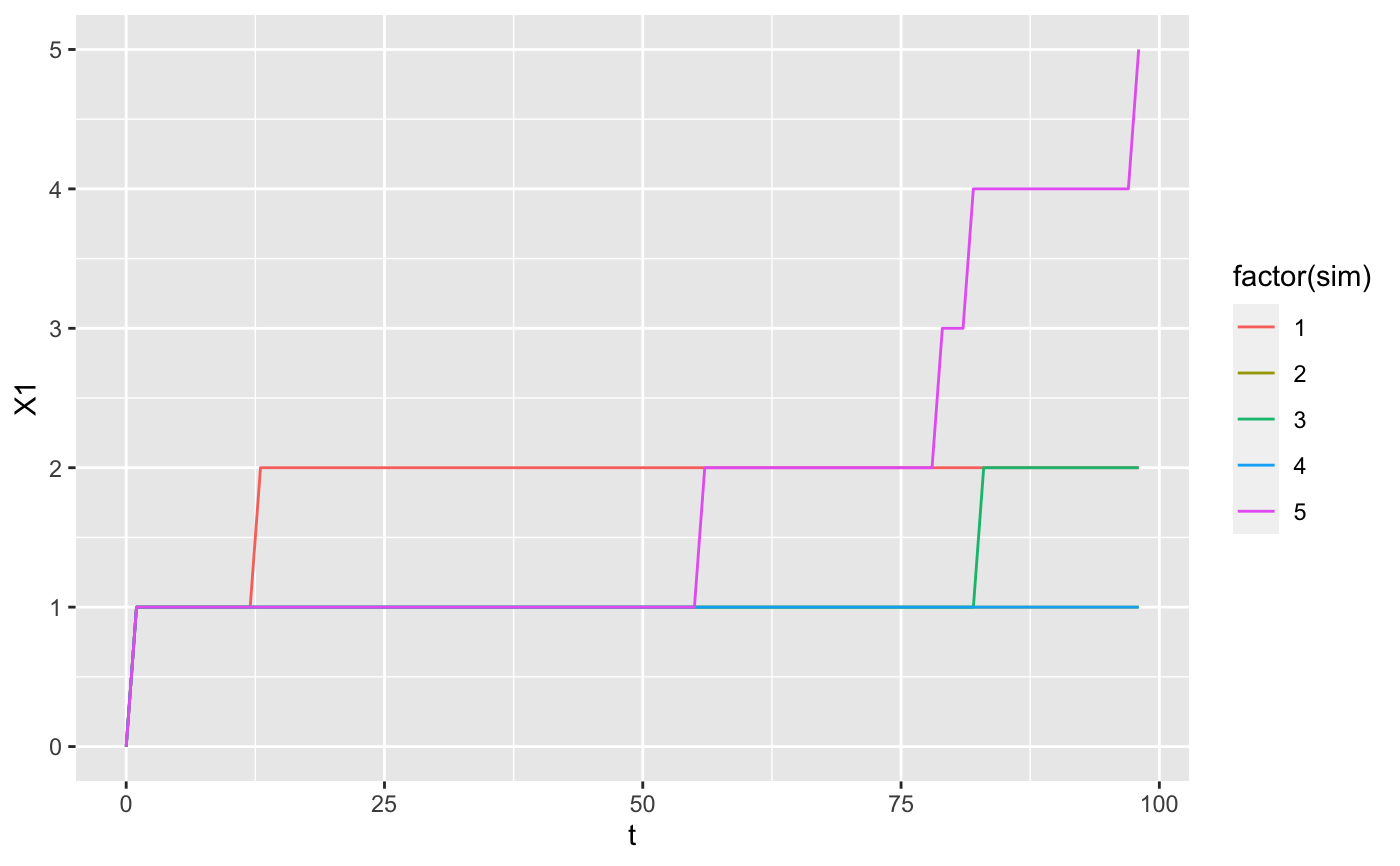Simulate an agent-based model for given state-to-state transfers
Source:R/simulate-agents.R
simulate_agents.RdSimulate an agent-based model for given state-to-state transfers
simulate_agents( trans_mat, init_vals, par_vals, max_T, n_sims, birth_dates = NULL, birth_states = NULL, verbose = TRUE, out_format = "wide" )
Arguments
| trans_mat | TBD matrix of size KxK where K is the total number of states (including death and excluding birth) |
|---|---|
| init_vals | vector of length K corresponding to the initial values in each state. This will be over-ridden by birth_dates and birth_states if those are not NULL. |
| par_vals | vector of named parameters and their values |
| max_T | total number of discrete time steps |
| n_sims | number of simulations to run |
| birth_dates | vector of size N, the maximum number of agents where each entry is the 'birth' of the agent into the system |
| birth_states | which state an agent begins when born into the system |
| verbose | logical to print progress |
| out_format | Format of the output data frame. Wide corresponds to one row to each agent and "long" corresponds to one row being a state change. Generally, 'wide' is more readable and slightly easier to use with other EpiCompare functions. However, With the 'wide' format, there is a problem when agents can enter a state more than once. This will trigger an error. |
Value
a data frame with the following columns
unique ID of agent that can be linked through simulations
time between 0 and max_T
integer of the state the agent goes to at that time
name of state corresponding to the integer
simulation number
Details
A (fairly) generic, simple agent-based model based on multinomial/categorical draws to transfer from state to state. Although the function can support a non-constant population, it does not support random births, they must be pre-specified. Random deaths may be supported by adding a compartment for them. Please see the 'basic-abm' vignette for more details on usage.
Examples
## SI example ## In this example, agents start out susceptible and then become infected trans_mat <- matrix(c("X0 * (1 - X1 * par1/N)", "X0 * X1 * par1 / N", "0", "X1"), byrow = TRUE, nrow = 2) rownames(trans_mat) <- c("S", "I") init_vals <- c(999, 1) par_vals <- c(par1 = .01) max_T <- 100 n_sims <- 5 abm <- simulate_agents(trans_mat, init_vals, par_vals, max_T,n_sims, verbose = FALSE) head(abm)#> # A tibble: 6 x 4 #> sim agent_id S I #> <dbl> <dbl> <dbl> <dbl> #> 1 1 1 1 NA #> 2 1 2 1 NA #> 3 1 3 1 NA #> 4 1 4 1 NA #> 5 1 5 1 NA #> 6 1 6 1 NA#> #> 1 13 56 79 82 83 98 #> 5 1 1 1 1 1 1library(ggplot2) library(dplyr) abm %>% dplyr::group_by(sim) %>% agents_to_aggregate(states = I) %>% ggplot(aes( x= t, y = X1, group = sim, col = factor(sim))) + geom_line()
